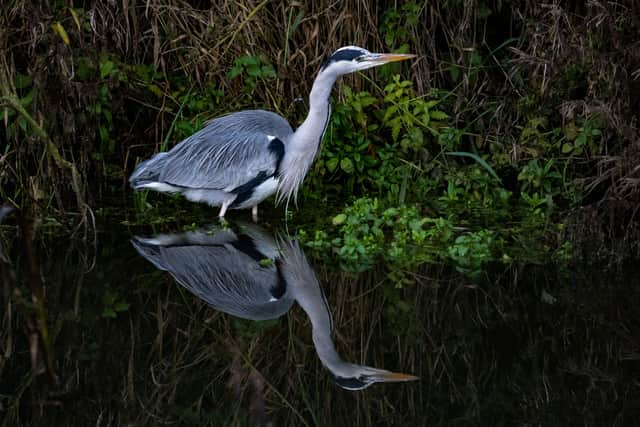Grey herons: Conservationists fear iconic wetland bird heading for threat list
and live on Freeview channel 276
Grey heron numbers aren't recovering from harsh winters as well as they used to, and experts fear the once-common waterbird may soon be at risk.
While wildlife experts have used World Wetland Day (2 February) to highlight how much wetland conservation projects have been able to help some species - such as the once-extinct common crane - others are still struggling. The British Trust for Ornithology (BTO) has marked the day by sharing the latest findings from its long-running Heronries Census, which has been monitoring waterbird populations since 1928.
Advertisement
Hide AdAdvertisement
Hide AdGrey herons have regularly experienced "boom and bust" population rises and falls since an annual census began almost a century ago, with numbers usually seeing temporary declines after severe winters. But the latest dip in numbers has been showing little sign of recovery, the BTO says, warning that the iconic species may be heading for the Birds of Conservation Concern's Amber List.


Research ecologist Ian Woodward told SWNS: “This ongoing survey helps us monitor the overall well-being of nesting heron species across the UK. Thanks to the wealth of information gathered by our dedicated volunteers we can see just how these birds are responding both positively and negatively to changes in the environment."
The results showed just how important protecting and improving the UK’s wetlands were as essential habitats for many of the UK's resident species, he said. But he added that the BTO needed more volunteers to help with its Heronries Census, to help fill in the gaps.
“Many birdwatchers may be aware of new or small nesting colonies that haven’t yet been recorded by the census, and these could be vital in our understanding of how these species are adapting to change, or colonising new areas," Mr Woodward said. "The more information we can gather, the better we will understand just how our nesting herons and egrets are faring in an ever-changing landscape.”
Advertisement
Hide AdAdvertisement
Hide AdThe census showed climate change having an impact on other waterbird species too. The number of species covered by the census has actually grown in recent years - as birds formerly restricted to Europe colonised the UK’s wetlands as they seek more favourable climes.
Little egrets first started nesting in the UK in 1996, and over the past couple of decades they have been joined by great egrets, cattle egrets, and spoonbills. The BTO says the glossy ibis is now showing signs it may join them.
The cormorant, meanwhile, has shown a change in its nesting behaviour- with some birds now breeding inland in trees, as opposed to on traditional coastal cliffs.
Comment Guidelines
National World encourages reader discussion on our stories. User feedback, insights and back-and-forth exchanges add a rich layer of context to reporting. Please review our Community Guidelines before commenting.
